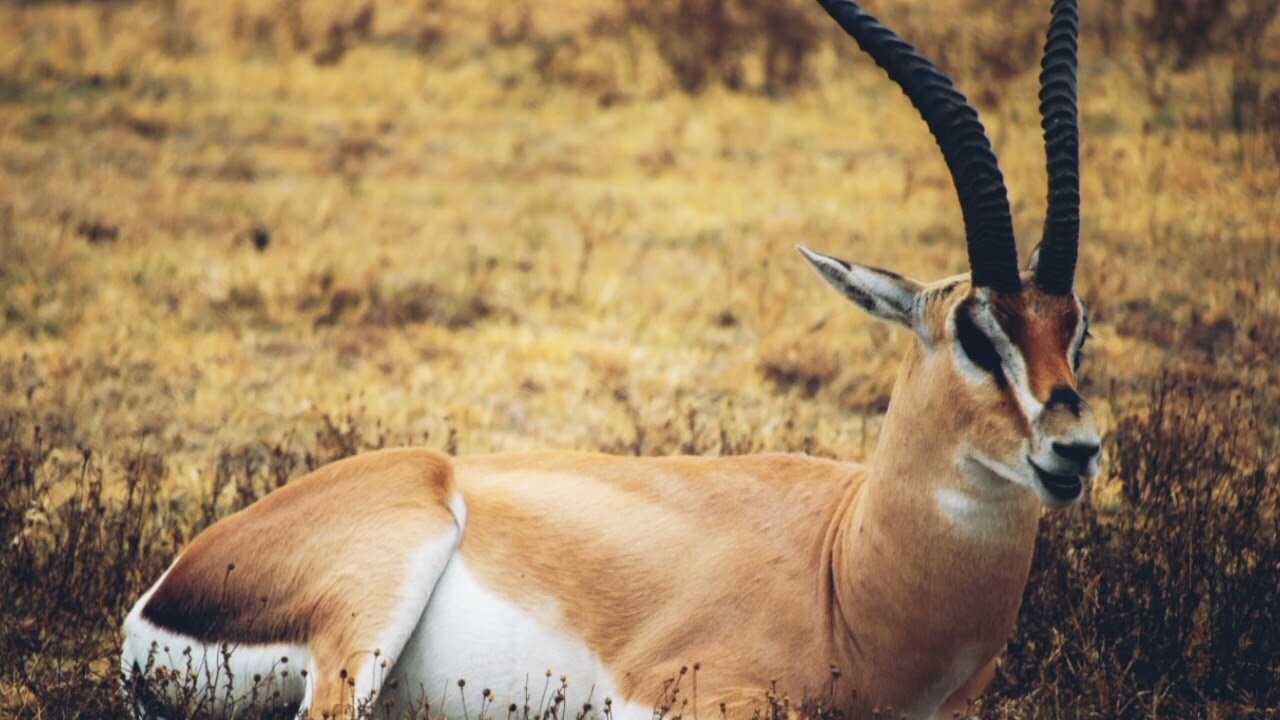Premium Only Content

Interesting facts about grant's gazelle by weird square
#pet #animal : The most, new, latest, shocking, weird, scary, funny, fascinating, interesting and amazing things | facts in the world.
The Grant's gazelle is a species of gazelle distributed from northern Tanzania to South Sudan and Ethiopia, and from the Kenyan coast to Lake Victoria. Its Swahili name is Swala Granti. It was named for a 19th-century Scottish explorer, Lt Col Grant.
Grant's gazelle is more genetically related to Soemmerring's gazelle (N. soemmerringii) and Thomson's gazelle (Eudorcas thomsonii) with Soemmering’s gazelle being the closest relative of the two species. Grant's gazelle shows high genetic variation among its populations, though there is no geographic isolation. The differentiation of the species may have evolved during repeated expansion and contraction of arid habitats during the late Pleistocene era in which populations were possibly isolated. Grant's gazelle was formerly considered a member of the genus Gazella within the subgenus Nanger before Nanger was elevated to genus status.
The Grant's gazelle stands 75–95 cm (30–37 in) at the shoulder. The females weigh from 35 to 50 kg (77 to 110 lb) and males from 50 to 80 kg (110 to 180 lb). Its coat is a beige orange on the back with a white belly. The Grant's gazelle looks similar to a Thomson's gazelle, except it is much larger and has lyre-shaped horns which are stout at the base, clearly ringed, and measuring 45–81 cm (18–32 in) long. The subspecies are segregated by different morphological characters, such as horn shape and slight differences in coat colour. These differences are not indicative of ecological separation as with some species. Grant's gazelles are extremely fast; they can run 80 km/h (50 mph), but larger males do not exceed 72 km/h (45 mph)Grant’s gazelles are generally mixed feeders that both browse and graze. Their average diet consists of 65.8% browse and 34.3% graze. Rainfall in their habitats seems to be the determinant of their diets. The Grant's gazelle's diet may also be responsible for the slow growth rates in the browsed plots. They get most of their moisture from the plants they eat, so they do not often have to drink water. Thus they can stay on the plains long after the rains end. From July to September, gazelles move deep into dense brush and wait for the next rains. They will eat red oats and small, tough plants, which are avoided by the other ungulates. This allows the gazelles to survive in the brush during the dry season. Grant’s gazelles eat mainly dicotyledons during the dry season and grass in the wet season. Animal planet | Discovery | Netflix | Documentary | Animal World
| BBC Earth | NatGeoWild | Brave wilderness | The Dodo| Animal Aid Unlimited | Animal Planet | Real Wild | iPanda | Hope for Paws | Kruger Sightings | Discovery #animals
-
 LIVE
LIVE
blackfox87
1 hour agoWild Roots Time!| #SponsoredStream | #DisabledVeteran
519 watching -
 LIVE
LIVE
Major League Fishing
3 days agoLIVE Tackle Warehouse Invitationals, Stop 5, Day 2
274 watching -

SquallRush
8 hours agoExperimenting with Non Meta Decks in Ranked
19.8K2 -
 2:01:12
2:01:12
Game On!
14 hours ago $2.84 earnedOur MLB Expert Predicts Braves to WIN the World Series!
22.1K -
 LIVE
LIVE
xBuRnTx
1 hour ago🎮 Early Bird Gets the Dub! | Fortnite Solos
85 watching -
 2:32:45
2:32:45
RG_GerkClan
3 hours ago🔴LIVE - I'm Back from Vacation...Lets Dominate - Gray Zone Warfare - Gerk Clan
5.07K1 -
 48:28
48:28
SB Mowing
8 days agoI Took a RISK Cleaning This Yard and Could’ve Ended Up in the Hospital
17.4K36 -
 LIVE
LIVE
Shield_PR_Gaming
2 hours agoGrazy Zone Warfare Solo Missions are a pain in the butt Part 2!
77 watching -
 8:04
8:04
WhaddoYouMeme
18 hours ago $4.03 earnedThe REAL Truth Behind Bieber's 'Mental Breakdown' Post
93.2K15 -
 LIVE
LIVE
MrR4ger
4 hours agoMIDNIGHT R4GE - TEAMWORK MAKES THE DREAM WORK / SOCT, PEAK, GEARS, ETC?
44 watching